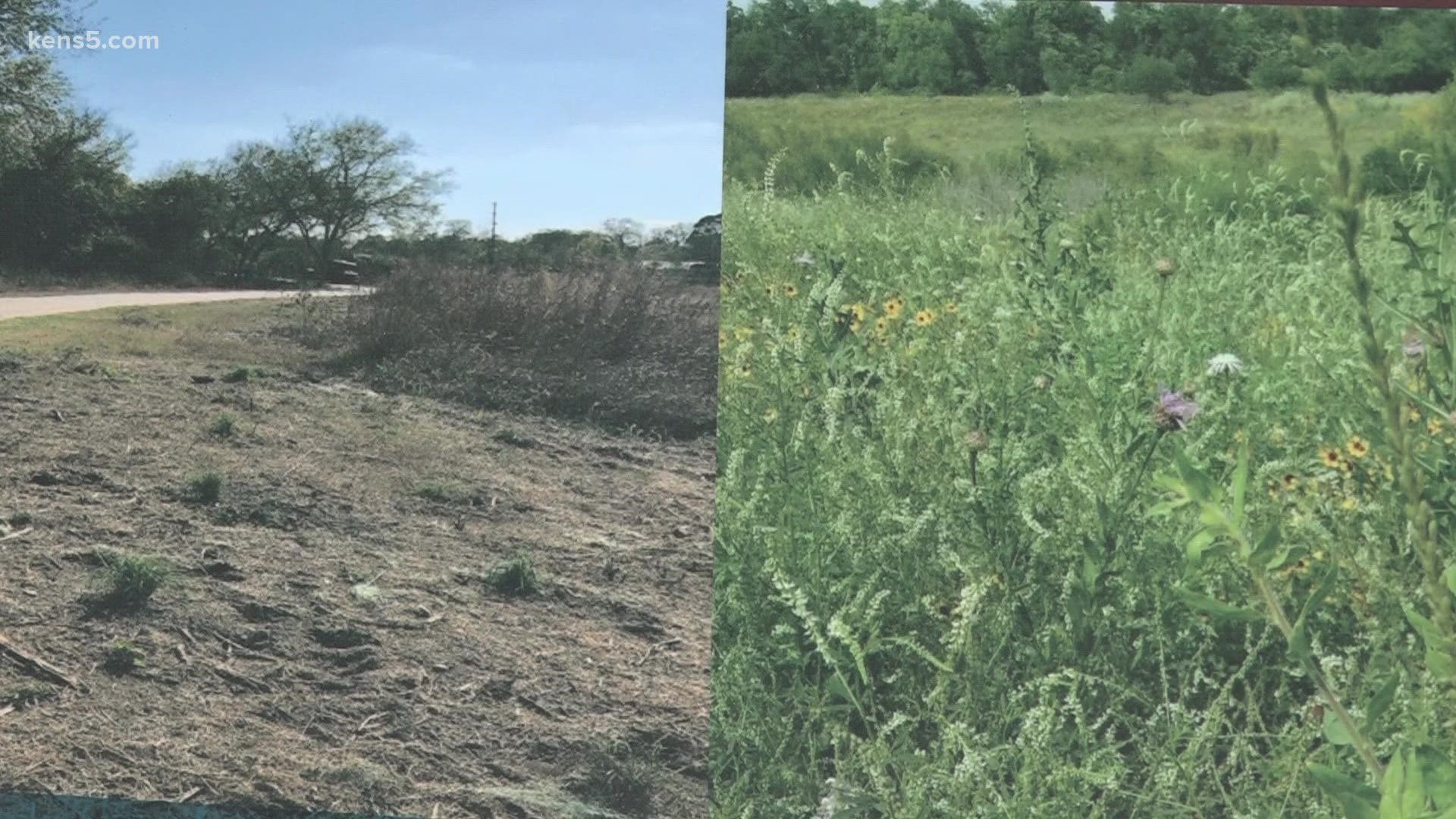SAN ANTONIO — The humans and other animals that flock to the Mission Reach of the San Antonio River on the city’s southside are having to adjust to an entirely new landscape.
Loretta Quesada, who said she works from home and takes to the trails every day on her lunch break said "Right away I was in shock."
Quesada said when almost all the vegetation was stripped from her normal route, she couldn’t imagine why this kind of work was being done in an area where millions of public dollars have been invested in restoring the river’s ecosystem.
"I come here almost on a daily basis, so when I saw it I said, ‘What happened to the beautiful scenery I used to see every day?’"
Instead of tall grasses nodding in the breeze, Quesada was greeted by bare dirt marred by deep ruts created by heavy equipment, tree stumps sliced off at ground level, vegetation that had been piled into mounds of mulch and masses of mesh netting tangled into heaps.
Quesada lamented “I love the river, the trees, the greenery, the flowers and the natural growth we need out here.”
But biologists at the San Antonio River Authority said they have a duty to protect lives and property by making sure the river does a good job of allowing storm water to move downstream freely.
The vegetation campaign is a flood control tool they call stem removal.
Steven Schauer is the Director of External Communication for the San Antonio River Authority.
Schauer said “The number one priority of the mission reach is still flood conveyance, so we are now using new models and they determine how many trees can be here and how many trees we have to remove.”
When the work is done, Schauer said the area will look less like a woodland and more like a grassland or prairie.
“It’s still going to be a wonderful ecosystem that serves a very good purpose for our community and the restoration of the project. It’s just not going to have as much woody vegetation, trees and shrubs of that nature,” Schauer said.
Schauer said the agency has been fielding lots of questions from people who love both the river and the trail that snakes along beside it.
“They see the trees being taken down and we appreciate those questions. We appreciate that people are passionate about the ecosystem and they love it out here and they want to know why we are doing it and the bottom line is it’s for the flood conveyance of this project.” Schauer said.
The next phase of the work will be done in the area near Roosevelt Avenue and Mission Road in the next few weeks. Schauer said they are making sure the neighbors are aware of what is to come.
“We are sending out postcards to area neighbors, so that they will understand when they see the work happening. They can come to our website and learn more about why we are doing this work and the significance behind it,” Schauer said.
Schauer said anyone with questions about the work need only look at work zones that have been completed within the last few months, where nature is already pushing grasses up and out of the ground.
“You are already seeing nature start to come back. The grasslands that we are restoring here are already coming back to this area and six months or a year from now this area will be a beautiful native grassland full of life and we are really excited about that,” Schauer said.

